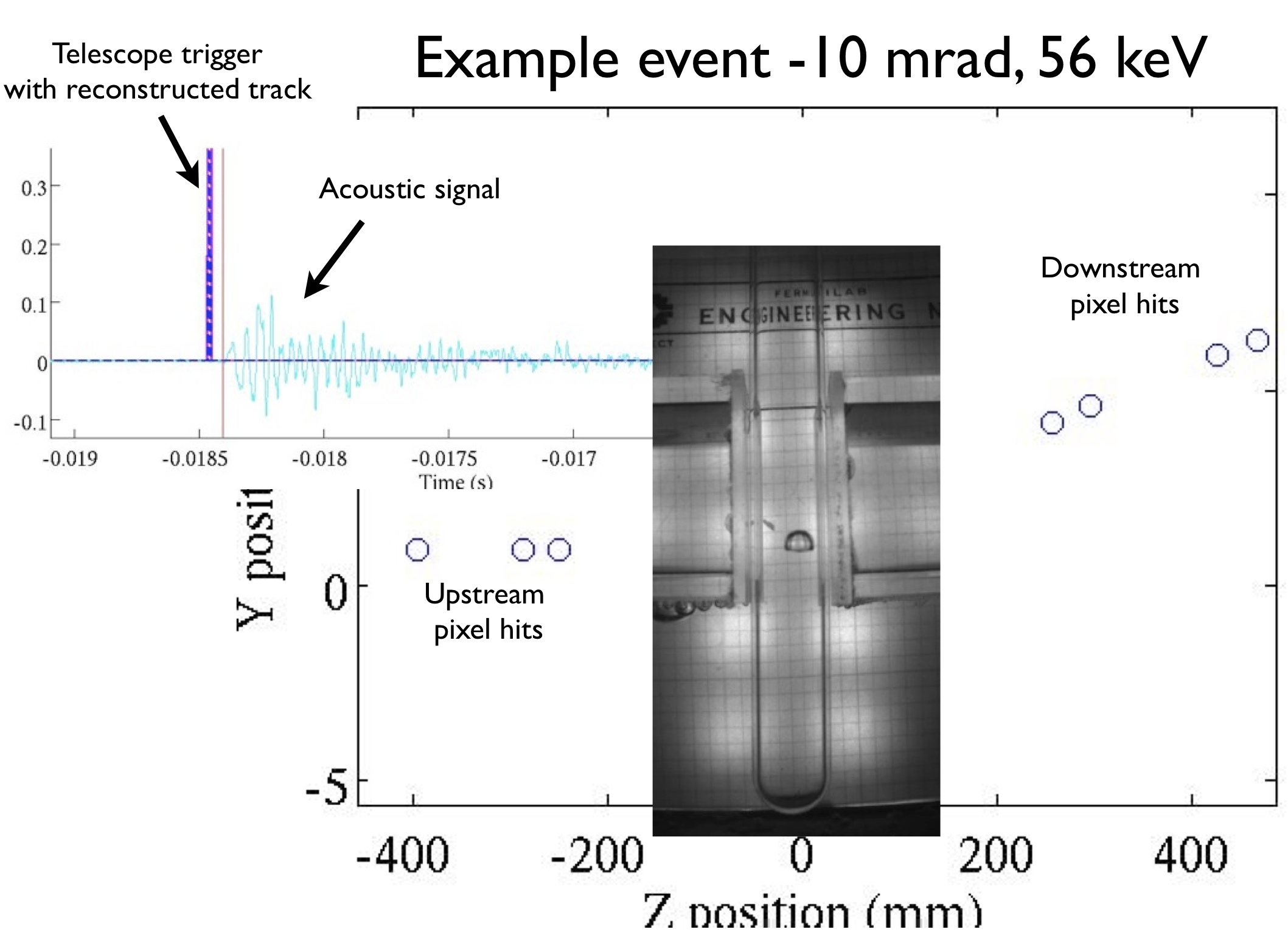The COUPP Collaboration uses bubble chambers to search for dark matter. The experiment works because the fluid in the detector is in a “superheated” state – the fluid wants to boil but needs something to give it the extra heat to make a bubble. Particle interactions with neutrons, alphas or potentially dark matter can give that extra little bit of energy. The amount of energy required to make a bubble is an important parameter in determining the sensitivity of the experiment, and we need to understand exactly what it takes to nucleate a bubble in the chamber. In March, the COUPP Iodine Recoil Threshold Experiment (CIRTE for short) had a two week run in the Fermilab Test Beam Facility. By tracking a beam of pions as they scattered in a small bubble chamber the size of a test tube, we could measure the amount of energy necessary to produce a bubble. The above figure shows an example event from this run: a pion comes down the beam “upstream” of the bubble chamber, scatters off a nucleus in the chamber producing the bubble and then heads off at a different angle “downstream.” Using the scattering angle and kinematics, the energy deposition can be calculated. The sound of the bubble formation provides the timing that allows COUPP to line up a specific bubble with the right pion (top left in the figure). When the analysis is complete, these data will improve our understanding of bubble nucleation and the sensitivity of our dark matter searches.
– Hugh Lippincott










